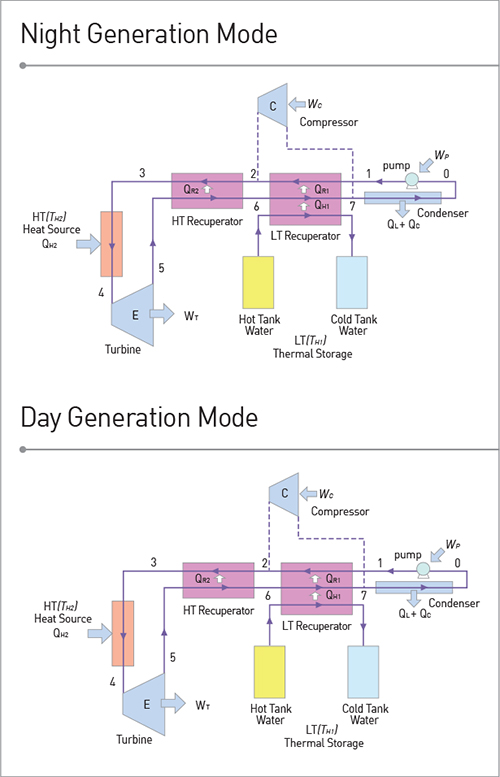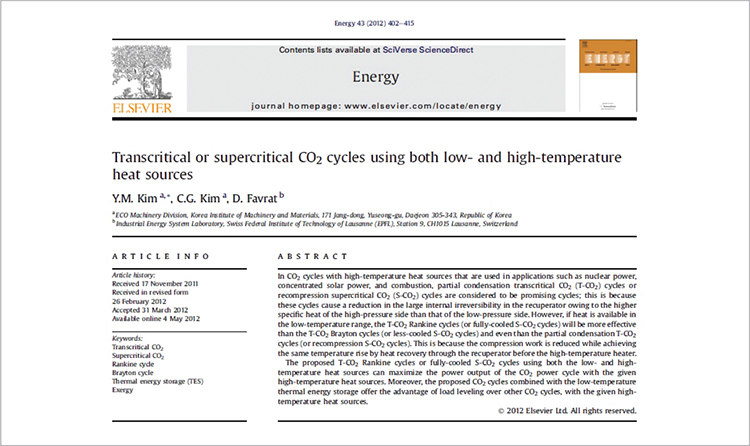System Configuration and operation method of a supercritical CO2 power cycle that effectively uses the low-temperature heat source to obtain higher output from the same high-temperature heat source

Client / Market
- Coal-fired power plant, solar power plant, nuclear power plant
Necessity of this Technology
- Need to improve the efficiency and output and enable load control
- There is a limit to efficiency improvement as the high-pressure side has a higher specific heat than the low-pressure side in the regenerative heat exchange process of the supercritical CO2 power-cycle.
- A recompression cycle had been proposed, but the output was reduced due to increased compression work.
- There is increasing interest for supercritical CO2 power cycle system that could directly utilize different heat sources such as fossil fuel, biofuel, solar heat, nuclear power, and waste heat.
- There is a difficult with load control for coal-fired power plant or nuclear power plant, therefore, a supercritical CO2 power cycle system needs to be developed, which can improve efficiency from the same heat source and enables load control.
Technical Differentiation
- By utlilizing low-temperature heat sources like low-temperature waste heat and geothermal heat, high-efficiency generation using high-temperature heat sources like coal-fired power generation, solar power generation, and nuclear power generation can be achieved.
- For thermal power plant and nuclear power plant, using the same hightemperature heat source, 20% efficiency improvement and 40% load control can be achieved compared to the existing method.
- The proposed supercritical CO2 power cycle utilizes low-temperature waste heat to obtain 20% higher output and efficiency improvement from the same hightemperature heat source.
- Compared to the thermal power plant and nuclear power plant that have a difficulty with load control, using the same high-temperature heat source, over 40% load control can be achieved.
Excellence of Technology
- During the night, the supercritical CO2 cycle operated for partial cooling and the low-temperature waste heat is stored.
- During the day, stored waste heat is used to run the proposed supercritical CO2 cycle.
- For example, for nuclear power, the generating output is 358 MWe and the thermal efficiency is 37.6%. During the day, the generating output is 500 MWe, and the thermal efficiency is 52.5%.
- Using the same heat source, over 40% load control can be achieved.
- Published a SCI paper: Transcritical or supercritical CO2 cycles using both low- and high-temperature heat sources (Energy 43 (2012), quoted 132 times (as of December 2018))
- Has several patents and papers on high-efficiency power cycle and energy storage.

Current Intellectual Property Right Status
PATENT
- Heat Engine Based on Transcritical Rankine Cycle with Improved Exergy Efficiency and Method Thereof (KR1345106, PCT/KR2012/010664)

|






